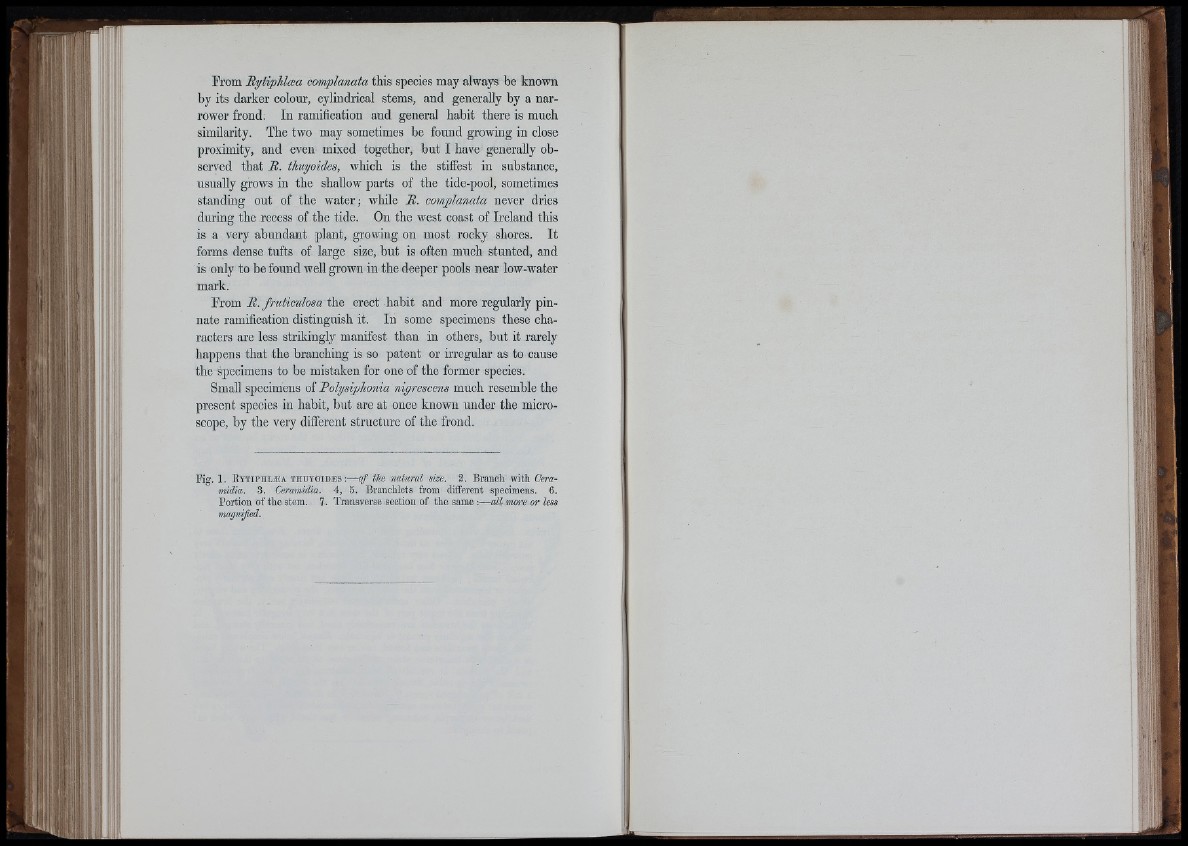
From Rytiphlæa complanata this species may always be known
by its darker colour, cylindrical stems, and generally by a narrower
frond. In ramification and general habit there is much
similarity. The two may sometimes be found growing in close
proximity, and even mixed together, but I have generally observed
that R. thuyoides, which is the stiffest in substance,
usually grows in the shallow parts of the tide-pool, sometimes
standing out of the water; while R. complanata never dries
during the recess of the tide. On the west coast of Ireland this
is a very abundant plant, growing on most rocky shores. It
forms dense tufts of large size, but is often much stunted, and
is only to be found well grown in the deeper pools near low-water
mark.
From R. fruticulosa the erect habit and more regularly pinnate
ramification distinguish it. In some specimens these characters
are less strikingly manifest than in others, but it rarely
happens that the branching is so patent or irregular as to cause
the specimens to be mistaken for one of the former species.
Small specimens of Polysiphonia nigrescens much resemble the
present species in habit, but are at once known under the microscope,
by the very different structure of the frond.
Fig. 1. E y tip h læ a th u y o id e s :— o f the natural size. 2. Branch with Cera-
mid'ia. 3. Ceramidia. 4, 5. Branchlets from different specimens. 6.
Portion of the stem. 7. Transverse section of the same :— all more or less